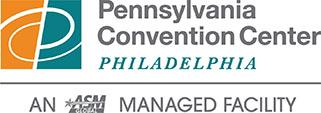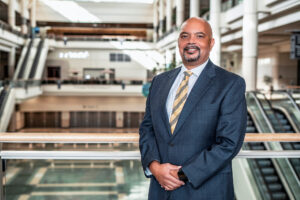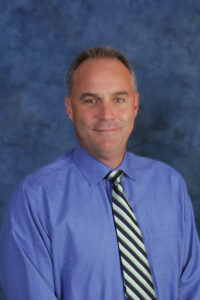Welcome to Our New Members

Please welcome our newest members who joined IAVM in August 2022. Thank you for being a part of the association! Also, let us get to know you better by participating in the I Am Venue Management series. Please visit http://www.iavm.org/i-am-venue-management-share-your-story to share your story and photo.
Kailee Ayers, First National Bank Arena, State University, AR
Noelle Baddeley, Phoenix Convention Center & Venues, Phoenix, AZ
Andre Bennington, Dayton Live, Dayton, OH
Rebecca Beyer, The Dollar Loan Center, Henderson, NV
Alexandra Black, Phoenix Convention Center & Venues, Phoenix, AZ
Mike Bober, The Dollar Loan Center, Henderson, NV
Christina Brown, Rogers Arena | Canucks Sports & Entertainment, Vancouver, BC, Canada
Kelly Bryl, Georgia International Convention Center/GICC, College Park, GA
Megan Caldwell, Three Rivers Campus, Kennewick, WA
Steve Carl, The Dollar Loan Center, Henderson, NV
William Code, Georgia International Convention Center/GICC, College Park, GA
Joe Collins, Phoenix Convention Center & Venues, Phoenix, AZ
Isabella Correa, Enterprise Center/Stifel Theatre, Saint Louis, MO
Austin Crawford, Three Rivers Campus, Kennewick, WA
Brian Cummings, Gordon Field House & Activities Center, Rochester, NY
Matt Cunningham, Kansas City Convention Center, Kansas City, MO
Jaron Davis, Georgia International Convention Center/GICC, College Park, GA
Ryan Dunne, Barclays Center, Commack, NY
Marc Feldman, The Dollar Loan Center, Henderson, NV
Tijuan Fletcher, The Dollar Loan Center, Henderson, NV
Jose Flores, Colorado Convention Center, Denver, CO
Stacey Flores, City of Dallas, Dallas, TX
Davin Gaddy, The Dollar Loan Center, Henderson, NV
Tasha Gandy, Charleston Gaillard Center, Charleston, SC
Michelle Gebhart, American Tower Corporation, Cary, NC
John Gilbert, AT&T Performing Arts Center, Dallas, TX
Sam Giordano, University of Colorado Boulder, Boulder, CO
Michelle Gustafson, Three Rivers Campus, Kennewick, WA
Emily Hamm, Bridgestone Arena, Nashville, TN
Darrin Harrje, Bridgestone Arena, Nashville, TN
Jeremiah Hayward, Three Rivers Campus, Kennewick, WA
Sydney Heidegger, Three Rivers Campus, Kennewick, WA
Madeline Hollyfield, Prudential Center, Newark, NJ
Jackie Horvath, Horvath Communications, South Bend, IN
Kevin Kahn, Joffe Emergency Services, Santa Monica, CA
Sean Kenny, Phoenix Convention Center & Venues, Phoenix, AZ
Ron Larson, Three Rivers Campus, Kennewick, WA
Leslie Lee, Rogers Arena | Canucks Sports & Entertainment, Vancouver, BC, Canada
Julian Matos, Ping Communications, Piscataway, NJ
Tabitha Mayers, Jekyll Island Convention Center, Jekyll Island, GA
Michael Mell, Theater Design, Cold Spring, NY
Santonio Moore, The Dollar Loan Center, Henderson, NV
Julio Moreno, ExtraMile Arena, Boise, ID
Kendra Moyars, Columbia Metropolitan Convention Center, Columbia, SC
Steve Nebehay, The Dollar Loan Center, Henderson, NV
Jonathan Newell, Bridgestone Arena, Nashville, TN
Emily O’Neill, Rogers Arena | Canucks Sports & Entertainment, Vancouver, BC
Jason Olsen, Durham Performing Arts Center, Durham, NC
Justin Peckham, The Dollar Loan Center, Henderson, NV
Liz Peralta, Phoenix Convention Center & Venues, Phoenix, AZ
Jocelyn Perez, Three Rivers Campus, Kennewick, WA
Joseph Ralston, The Dollar Loan Center, Henderson, NV
Baylee Richter, Columbia Metropolitan Convention Center, Columbia, SC
Steve Roberts, Three Rivers Campus, Kennewick, WA
Stephen Rorai, Performing Arts Fort Worth, Fort Worth, TX
Johnny Sanchez, Phoenix Convention Center & Venues, Phoenix, AZ
Lindsey Sanchez, H-E-B Center at Cedar Park, Cedar Park, TX
Doug Schaub, Phoenix Convention Center & Venues, Phoenix, AZ
Brayden Sherman, The Dollar Loan Center, Henderson, NV
Vikram Singh, The Dollar Loan Center, Henderson, NV
Ronnie Sparks, Georgia International Convention Center/GICC, College Park, GA
Danyhl Stanley, Georgia International Convention Center/GICC, College Park, GA
Audrix Tamarez, Barclays Center, Yonkers, NY
Elena Thornton, L-Acoustics, Westlake Village, CA
Lisa Trainor, Sodexo/Centerplate, New Orleans, LA
David Treber, Wicomico Youth & Civic Center, Salisbury, MD
Jordan Urban, INTRUST Bank Arena, Wichita, KS
Andrew Vecere, Prudential Center, Newark, NJ
Celeste Villegas, Kay Bailey Hutchison Convention Center Dallas, Dallas, TX
Diana Walcott, Georgia International Convention Center/GICC, College Park, GA
Casey Warnick, Charleston Gaillard Center, Charleston, SC
Christina Wenger, The Juilliard School, New York, NY
Tosha White, INTRUST Bank Arena, Wichita, KS
Emma Whitlock, Swiftel Center, Brookings, SD
Angel Wilson, San Diego Theatres/San Diego Civic Theatre, San Diego, CA
Travis Winters, ExtraMile Arena, Boise, ID
Theresa Yvonne, Mountain View Center for the Performing Arts, Mountain View, CA
Pennsylvania Convention Center Authority, ASM Global Stars Scholarship Program Team to Award Scholarships
By Jude-Anne Spencer-Phillip
Vivian Freymoyer, Michelle Linahan, and Daniella Sirleaf were announced as recipients of the inaugural ASM Global Stars Scholarship Program, along with 22 other students from across the United States. Freymoyer is an incoming freshman at Saint Joseph’s University, and Linahan and Sirleaf are both business majors at the Community College of Philadelphia.
The scholarships awarded to the Philadelphia students through the Program were matched by the Pennsylvania Convention  Center Authority, allowing more students to benefit from the award and further supporting their education and career goals.
Center Authority, allowing more students to benefit from the award and further supporting their education and career goals.
“I am incredibly honored to receive this award and I truly appreciate the support from ASM Global and the Pennsylvania Convention Center Authority,” said Freymoyer, a Food Marketing major. “I am looking forward to attending Saint Joseph’s University in the fall and am eager to begin my next chapter.”
“The Pennsylvania Convention Center Authority is committed to investing in the future of the hospitality industry,” said John J. McNichol, President and CEO, Pennsylvania Convention Center Authority. “Initiatives such as the ASM Global Stars Scholarship Program are closely aligned with the overall mission of the Authority and provide a wonderful opportunity to make education more accessible for all. We are proud to support the academic pursuits of these three scholars.”
The ASM Global Stars Scholarship program is a part of ASM Global Acts, a corporate social responsibility platform launched in 2021, and provides educational and career development opportunities through scholarship awards and prospective internships to diverse and under-resourced communities.
“One of the key pillars of the ASM Global ACTS initiative is investing in people, and at the Pennsylvania Convention Center, we are committed to creating opportunities for the youth in our communities to have access to the resources they need to build their skills for a meaningful career in the hospitality and tourism industry,” said Kelvin D. Moore, Regional Vice President, ASM Global and General Manager at the Pennsylvania Convention Center. “We also thank the Pennsylvania Convention Center Authority for their continued partnership and the shared mission of making a difference in the communities in which we serve.”
Jude-Anne Spencer-Phillip is Senior Communications Manager at the Pennsylvania Convention Center.
Orange County Convention Center Announces Eric Blanc as New Deputy Director
By Emily Eades
The Orange County Convention Center (OCCC) announced the promotion of Eric Blanc, Sr., CMP to Deputy Director. In his new role, Blanc will oversee the OCCC’s Sales, Marketing, Event Management, and Exhibitor Services divisions.
Blanc became a part of the OCCC family in 2019 when he was hired as the Assistant Director of Sales. In February 2020, he was promoted to Senior Director of Sales.
Prior to joining the OCCC’s Sales Division, Blanc was the Director of Sales, Marketing and Convention Services for  the Tampa Convention Center, where he spent 15 years of his career. Blanc’s background spans across various top organizations in the industry, including The Freeman Companies and GES Expositions, where he was a National Sales Manager for both companies.
the Tampa Convention Center, where he spent 15 years of his career. Blanc’s background spans across various top organizations in the industry, including The Freeman Companies and GES Expositions, where he was a National Sales Manager for both companies.
“I am honored to take on the role of Deputy Director would be an understatement,” Blanc said. “I am eager to lead our team forward, maintaining a highly visible presence in the convention industry and within Orange County to secure continued convention group bookings well into the future.”
Blanc graduated from Florida State University with a Bachelor of Science degree in Business – Marketing and holds a certificate from the IAVM’s Venue Management School.
Emily Eades is Public Relations/Information Officer | Marketing & Communications for the Orange County Convention Center.
Ticketmaster Launches New Technology to Integrate Collectible NFT’s Into Fan Experience
By Celebrity Access
Ticketmaster announced the launch of new technology that will provide event organizers with a new way to integrate collectible NFTs into the fan experience.
According to Ticketmaster, event organizers who sell tickets to live events through Ticketmaster will now have the ability to issue collectible NFTs before, during, and after live events.
The new system has already caught on and Ticketmaster reports ‘minting’ more than 5 million NFTs for event organizers on the Flow blockchain.
on the Flow blockchain.
The NFTs can be shared online or activated to access loyalty rewards around an artist or event through digital keepsakes, including VIP engagement opportunities and more.
The technology is powered by the Flow Blockchain, which has been designed as a commercial product and has already delivered programs experiences like NFL ALL DAY, NBA Top Shot and UFC Strike.
As well, the Flow Blockchain consumes less energy than traditional blockchain technology and according to independent auditor Deloitte, NFTs minted through Flow consume less power than a post on a social media site.
Ticketmaster is no stranger to the Flow technology and has already used the platform to distribute more than 70,000 one-of-one virtual commemorative ticket NFTs at Super Bowl LVI with each attendee’s unique seat location on the NFT itself. For the 2022 season, the NFL will offer Flow-minted NFTs to every attendee at more than 100 games, including at least 3 home games for each team.
“Event organizers who choose to offer fans an NFT with their ticket have a real opportunity to make this new technology relevant and relatable at scale,” said Brendan Lynch, Ticketmaster EVP of Enterprise & Revenue. “This is why we are partnering with Flow, because their blockchain is custom-built for fan engagement and frictionless consumer experiences.”
“Our partnership with Ticketmaster will enable millions of live event fans to immortalize, share and enhance their IRL experiences through digital collectibles,” added Mickey Maher, SVP Partnerships of Dapper Labs. “Ticketmaster has quickly become a leader in this space, so we’re excited to support their work in empowering event organizers to deliver even greater value to fans through the benefits of blockchain.”
Bob McClintock Named as Recipient of Events Industry Council’s Global Awards
By R.V. Baugus
The Events Industry Council (EIC), the global voice of the business events industry, has announced the recipients of its annual Global Awards, which celebrate and honor exemplary achievements and focus on leadership at all levels and areas of focus within the global business events industry.
Among this year’s EIC Hall of Leaders inductees is Bob McClintock, Executive Vice President Convention Centers for ASM Global. McClintock joins 143 previous recipients, each of whom has had a significant legacy impact on the
global business events sector. The recipients will be honored on October 10 at the Global Awards Celebration at ARIA Resort & Casino, Las Vegas.
“I confess this is a bit surreal – when one looks at the list of previous honorees it is impossible not to be humbled  to be on the same list as a Tom Mobley, Frank Poe, John Christison, Peggy Daidakis and Cliff Wallace, McClintock said in sharing the names of some of the industry’s biggest difference-makers. “And these are just some of the names from our world! It is not false modesty to quote Big Bird – ‘one of these things is not like the others!'”
to be on the same list as a Tom Mobley, Frank Poe, John Christison, Peggy Daidakis and Cliff Wallace, McClintock said in sharing the names of some of the industry’s biggest difference-makers. “And these are just some of the names from our world! It is not false modesty to quote Big Bird – ‘one of these things is not like the others!'”
McClintock was nominated by IAVM Director of Education Greg Wolfe, who received the good news from EIC Chief Executive Officer Amy Calvert that McClintock indeed was worthy of the honor.
“It brings me great joy to announce that Mr. Bob McClintock, Executive Vice President, ASM Global was selected to be inducted into EIC’s Hall of Leaders,” Calvert said. “The Events Industry Council is thrilled to present Mr. McClintock with this special honor – a true testament to his lifetime achievements and the meaningful work endeavored to support and to lift up this industry and its workforce. Mr. McClintock will be rightly placed among a distinctive group of individuals distinguished by leadership, legacy impact, innovation, perseverance, and vision.”
McClintock has more than three decades in the public assembly venue world, starting in 1990 through 2011 as Senior Vice President with SMG. He has been in his current position since October 2019.
“I have reflected on this over the past few days and have realized the incredibly good fortune I have had to be surrounded by some of the most talented, dedicated, and hard-working people I could have ever imagined,” McClintock said. “I made a conscious decision over my career to stay with SMG (now ASM Global) because I know that they made me better at my job – and allowed me to enjoy every minute. Whether it was mentors like Matt Brown and Thom Connors, peers like John Adams and David Causton, or my partner in crime for over 20 years, Gregg Caren, I was blessed to be able to learn, be motivated, and challenged by them every day.
“But most important has been those who are the actual engine that powers our industry. Maz, Rickey, Bumpsie, etc. (that is a Philly thing) are the ones we lean on day in and day out. I was reminded this week how much the pandemic hit them the hardest and how many of them haven’t come back. I think that this is the mission that we all have to embrace now – to rebuild our industry stronger and more resilient so that we can again offer the careers that those men and women can rely on.”
Registration for the awards October 10 is now open.
From all of your friends at IAVM and in the industry, congratulations on a well-deserved honor!
Do you want to receive a Front Row News weekly digest?
Categories
- Allied (861)
- Architecture (147)
- Arenas (747)
- Career (897)
- Convention Centers (895)
- Education (623)
- Events (1,544)
- Food & Beverage (193)
- Foundation (113)
- Guest Experience (1,496)
- Industry News (2,270)
- Leadership (1,888)
- Marketing (150)
- Membership (2,000)
- Music (213)
- Performing Arts Centers (454)
- Professional Development (409)
- Research (127)
- Safety & Security (442)
- Sports (763)
- Stadiums (608)
- Student (159)
- Technology (516)
- Ticketing (92)
- Touring (82)
- Trends (364)
- Uncategorized (745)
- Universities (218)
- Video (25)
- Young Professional (198)
Twitter Feed
- Twitter feed loading
Recent Posts
- VenuWorks Selected To Manage Historic Paramount Arts Center In Ashland
- Miami Beach Convention Center Wraps a Milestone Year
- Venuworks and ATG Entertainment Selected to Manage Fresno Convention and Entertainment Center
- Seattle Convention Center Announces Strategic Leadership Appointment and Growth Initiatives for 2026
- Peggy Daidakis Humbly Made Convention Center History
Categories
- Allied
- Architecture
- Arenas
- Career
- Convention Centers
- Education
- Events
- Food & Beverage
- Foundation
- Guest Experience
- Industry News
- Leadership
- Marketing
- Membership
- Music
- Performing Arts Centers
- Professional Development
- Research
- Safety & Security
- Sports
- Stadiums
- Student
- Technology
- Ticketing
- Touring
- Trends
- Uncategorized
- Universities
- Video
- Young Professional
Archives
- January 2026
- December 2025
- November 2025
- October 2025
- September 2025
- August 2025
- July 2025
- June 2025
- May 2025
- April 2025
- March 2025
- February 2025
- January 2025
- December 2024
- November 2024
- October 2024
- September 2024
- August 2024
- July 2024
- June 2024
- May 2024
- April 2024
- March 2024
- February 2024
- January 2024
- December 2023
- November 2023
- October 2023
- September 2023
- August 2023
- July 2023
- June 2023
- May 2023
- April 2023
- March 2023
- February 2023
- January 2023
- December 2022
- November 2022
- October 2022
- September 2022
- August 2022
- July 2022
- June 2022
- May 2022
- April 2022
- March 2022
- February 2022
- January 2022
- December 2021
- November 2021
- October 2021
- September 2021
- August 2021
- July 2021
- June 2021
- May 2021
- April 2021
- March 2021
- February 2021
- January 2021
- December 2020
- November 2020
- October 2020
- September 2020
- August 2020
- July 2020
- June 2020
- May 2020
- April 2020
- March 2020
- February 2020
- January 2020
- December 2019
- November 2019
- October 2019
- September 2019
- August 2019
- July 2019
- June 2019
- May 2019
- April 2019
- March 2019
- February 2019
- January 2019
- December 2018
- November 2018
- October 2018
- September 2018
- August 2018
- July 2018
- June 2018
- May 2018
- April 2018
- March 2018
- February 2018
- January 2018
- December 2017
- November 2017
- October 2017
- September 2017
- August 2017
- July 2017
- June 2017
- May 2017
- April 2017
- March 2017
- February 2017
- January 2017
- December 2016
- November 2016
- October 2016
- September 2016
- August 2016
- July 2016
- June 2016
- May 2016
- April 2016
- March 2016
- February 2016
- January 2016
- December 2015
- November 2015
- October 2015
- September 2015
- August 2015
- July 2015
- June 2015
- May 2015
- April 2015
- March 2015
- February 2015
- January 2015
- December 2014
- November 2014
- October 2014
- September 2014
- August 2014
- July 2014
- June 2014
- May 2014
- April 2014
- March 2014
- February 2014
- January 2014
- December 2013
- November 2013
- October 2013
- September 2013
- August 2013
- July 2013
- June 2013
- May 2013
- April 2013
- March 2013
- February 2013
- January 2013
- May 2012
- March 2012
- December 2011
- November 2011
- October 2011
Recent Comments
- Frank Bradshaw, Ph.D., CVE on John Meyer, CVE, a Tireless Advocate of Certification for Venue Professionals, Has Died
- Neil Sulkes on Hilary Hartung, Friend to Many in Venue Marketing, Has Left Us
- Jason Parker, CVE on The Devastation of Hurricane Helene and How We Can Support One Another
- Larry Perkins on Touhey Testifies Against Speculative Ticketing Before Congressional Subcommittee
- Peter Secord on Major Players for Planned Elkhart Amphitheater Were in the Mix at VenueConnect
